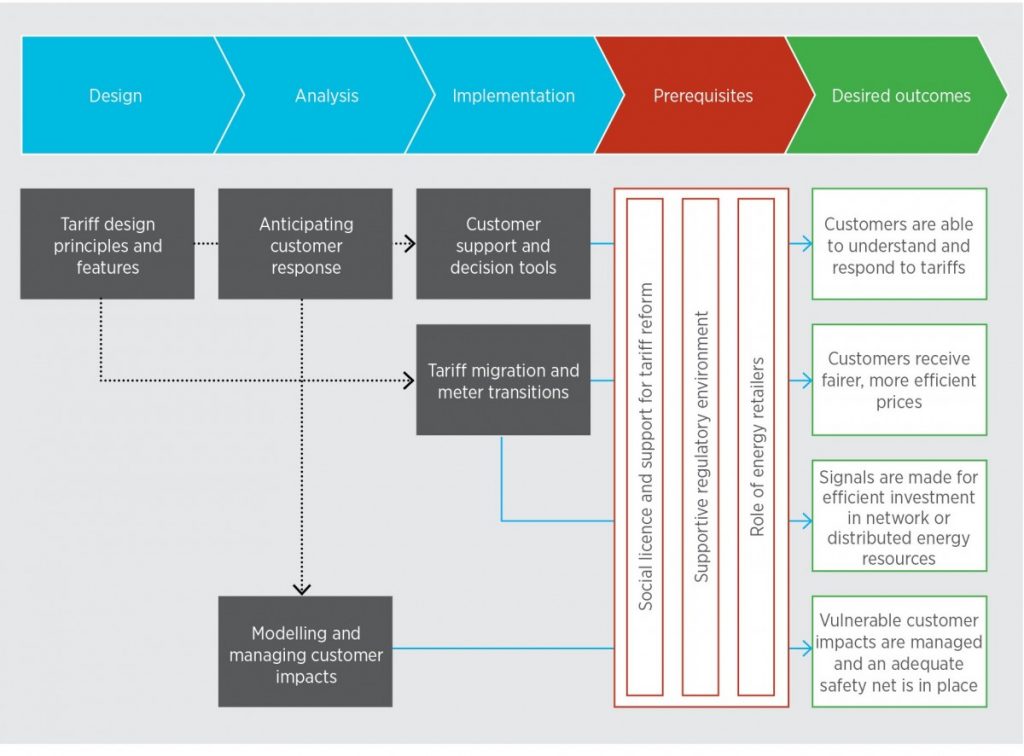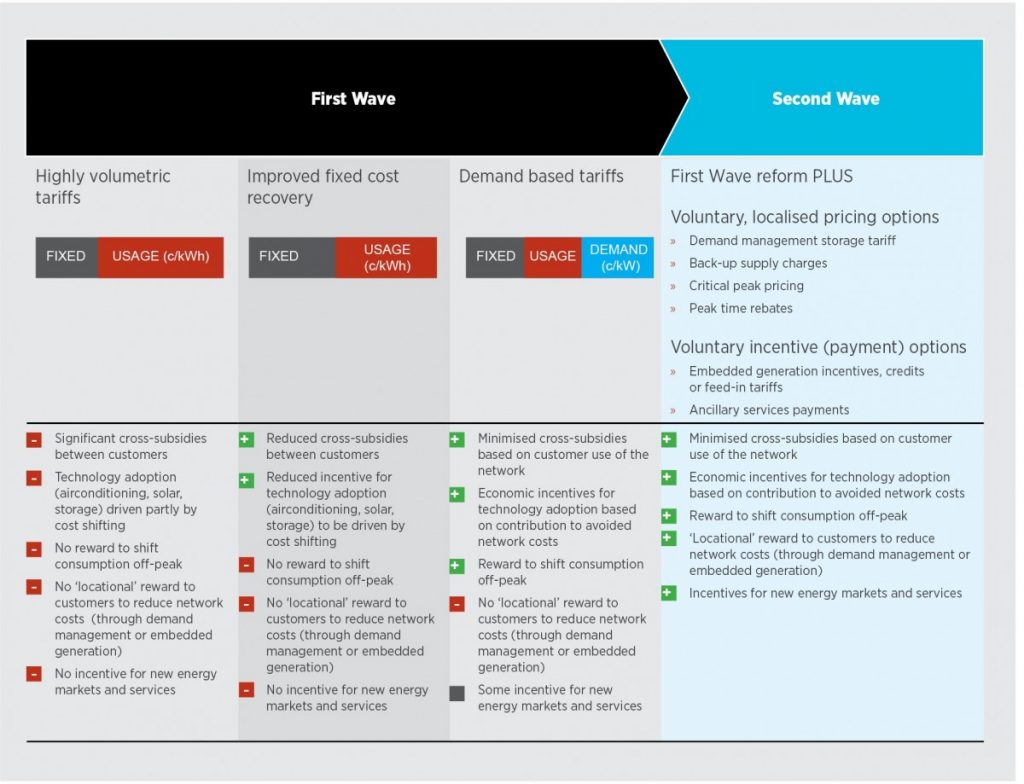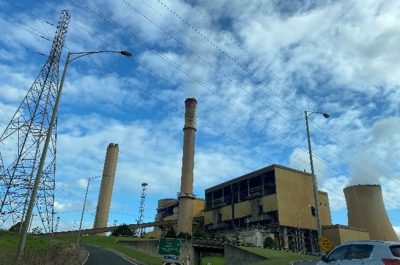Network tariff reform will deliver fairer, more efficient electricity prices
Customers are transforming the electricity system by embracing new technologies and rethinking how they source and use electricity. Network tariff reform has a vital role to play in the transformation and in delivering benefits to customers.
There is strong consensus from industry, government and customer advocates that current pricing frameworks are outdated and do not reflect the changing ways we use the electricity network. Australia’s electricity networks recognise their important responsibility to work with stakeholders to help customers unlock the full benefits of these new technologies, while delivering safety, reliability and efficiency.
Australia’s energy networks have developed new proposals for better tariffs in consultation with their customers and many of the new Tariff Structure Statements are currently being assessed by the Australian Energy Regulator.
The Energy Networks Association (ENA) has developed in consultation with stakeholders a draft Electricity Network Tariff Reform Handbook to guide networks and stakeholders in the process of tariff redesign and will host a public webinar on Wednesday 27 April to discuss the key insights.
Delivering fairness for customers and lower medium to long term prices
The first step is to re-design distribution network charges to reflect the cost of providing the service. With customers using the electricity network in increasingly different ways, our outdated tariff structures can result in big, unintended subsidies from some customers to others.
Cost-reflective prices – like demand-based tariffs – reward customers for using electricity outside of peak hours, using smart appliances or using local energy sources at peak times. They provide customers with increased control over their bill and improve fairness in cost-sharing.
Over the medium to longer term, network costs will be lower than they otherwise would have been. A recent study by Energeia[1], cited in the Handbook, estimated that demand-based network tariffs could save Australians $250 per annum on an average electricity bill or $17.7 billion over the next 20 years through reduced network investment. They will inform efficient decisions about future investment in both the network and new energy products and services.
This is particularly important given the long-term future of Australia’s electricity system is likely to see responsibility for key investment decisions about electricity infrastructure move from a few large entities to millions of individual customers.
The elements of successful tariff reform
The Handbook examines the elements of successful network tariff reform in three parts as illustrated in Figure 1 below.
- Design, analysis and implementation
- Pre-requisites for achieving the benefits of network tariff reform; and
- The desired outcomes of tariff reform.
Customer-centred tariff reform sees the four desired outcomes being of direct benefit to customers.
Figure 1: Interaction between elements of successful tariff reform

Prerequisites for successful tariff reform
Effective engagement between electricity distributors and electricity retailers is essential for successful network tariff reform, given most customers’ network costs are bundled with energy and other costs by their retailers. How retailers include network costs in their retail tariffs could influence the effectiveness of network tariff reform and affect choices customers make. Distributors should consider the commercial and regulatory drivers retailers face to maximise the prospect of successful tariff reform.
Tariff reform also requires a supportive regulatory environment. Australian Energy Ministers endorsed the shift to cost-reflective pricing through tariff reform in November 2014, and the Australian Energy Market Commission has made Rules that require distributors to transition to cost-reflectivity over time. The regulatory environment will need to continue to be supportive of a reform that will take several years to implement and deliver the full range of benefits to customers.
Distributors must develop and preserve a social licence to implement network tariff reform as it has the potential to affect every electricity customer. They must:
- Explain the case for change and the customer benefits it will deliver;
- Work closely with stakeholders and be open, transparent and equitable in all dealings (including equipping customers to reap the benefits); and
- Be willing and able to adapt over time, including as new learnings emerge from the staged implementation.
Two “Waves” of tariff reform to 2025
While the “first wave” of tariff reform will provide improved signals for customers and new service providers, and the foundation for new markets for Distributed Energy Resources (DER), full optimisation of DER and smart technologies might require a “second wave” of tariff and incentive reform, as indicated in Figure 2 below.
Figure 2: Two “Waves” of tariff reform to 2025

International and Australian case studies
The Handbook is informed by a range of case studies, including the experience of tariff reform programs in Europe, Canada and the United States, and these are presented in the Handbook. Australian and international analysis and experience strongly supports the introduction of cost-reflective pricing by Australia’s distribution networks.
Successful reform requires a clear customer focus, new support and decision tools to help customers, and collaboration with retailers, governments and regulators. It must be informed by a robust understanding of customer preferences, metering technology and jurisdictional regulation.
The principles underpinning the design of efficient and effective tariffs
Well-designed electricity network tariffs will promote:
- Economic efficiency – tariffs will drive efficient use of and investment in network services;
- Equity – tariffs are non-discriminatory with each customer’s charges reflecting the costs their electricity use creates; the effects on vulnerable customers are managed; and network costs are recovered over time;
- Simplicity – tariffs are easily understood so customers can source and use electricity to minimise their costs if they so choose;
- Pricing stability – unexpected adverse tariff changes are minimised;
- Network viability – tariffs enable distributors to recover at least their efficient costs so they are able to maintain services; and
- Minimisation of cross subsidies between customers.
Customer responses to tariff reform
It is essential that distributors understand the effects of proposed re-designed tariffs on their customers. The Handbook identifies options to quantify the effects of existing cross-subsidies, model the long term outcomes of different tariff design options and analyse the effects on the bills of different customer groups.
Distributors recognise that they must engage with customers to design tariffs that send price signals to which customers can respond. Energy management tools could be offered to help customers understand and manage their electricity usage. In addition to improved bill communications and energy portals, a range of in-home tools are identified. These may include simple “glowing orbs”, which change colour to indicate to a household its peak demand; simple demand management communications; or more complex, real-time in-home displays.
Well-recognised human factors such as aversion to risk, inertia and a tendency to place more weight on potential losses than on the prospect of benefits should also be considered in implementing tariff reform.
Protecting vulnerable customers
Evidence suggests many vulnerable customers would be better off immediately under a demand-based tariff. The Handbook references dynamic pricing trials in the USA that found 80 to 90 per cent of low-income customers would benefit from moving away from flat or inclining block rates to dynamic pricing.
There will, however, be customers who are vulnerable to price changes and less able to benefit from new technologies. The Handbook identifies approaches for supporting these customers and opportunities for distributors to collaborate with governments, retailers and customer advocates.
Possible “transition paths” to cost-reflective network pricing and insights to the effectiveness of alternative approaches such as customer assignment, and ‘opt-out’ and ‘opt-in’ frameworks are set out. International experience suggests that assignment and opt-out approaches deliver more certain and quicker transition to cost-reflectivity, which is important at a time of rapid technology change where the potential for cross-subsidies increasing under current tariffs exists.
Feedback on network tariff reform and the Handbook
The ENA is interested in the views of all stakeholders on the directions and case studies presented in the draft Electricity Network Tariff Reform Handbook and encourages interested parties to provide feedback. Please email info@ena.asn.au to provide feedback or arrange a discussion.
As part of the engagement process, the ENA is hosting an open webinar on Wednesday, 27 April 2016 from 9.00am to 10.30am (AEST) to provide a briefing on the Handbook and an opportunity for questions to be posed. To register your participation in the webinar, click here.
Stakeholders, the ENA and ultimately electricity customers will benefit from wide participation in development of the Handbook. The ENA invites comment on the Handbook until 9 May 2016.

